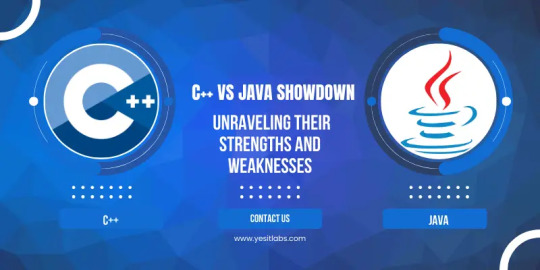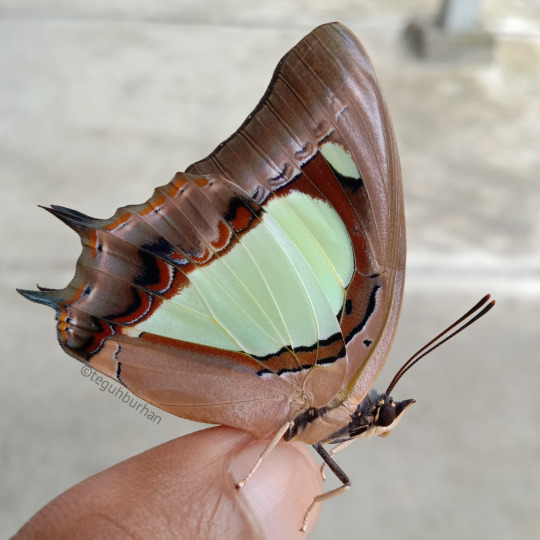#java expert
Explore tagged Tumblr posts
Text
Web Development Course in Gwalior is Your Gateway to a Successful Career
Cupule Trainings, as a best IT training institute in Gwalior, offers job consultancy service, certification and training in Angular Js, Android, Java, PHP, HTML5 Bootstrap, digital marketing, SEO, Social media marekting, Wordpress, Shopify, HTML CSS, CSS3, IOS, Web design and development, programming languages, database management system and all other certification courses from highly experienced industry experts.
#Cupule Trainings#as a best IT training institute in Gwalior#offers job consultancy service#certification and training in Angular Js#Android#Java#PHP#HTML5 Bootstrap#digital marketing#SEO#Social media marekting#Wordpress#Shopify#HTML CSS#CSS3#IOS#Web design and development#programming languages#database management system and all other certification courses from highly experienced industry experts.
0 notes
Text
Learn Java programming with the expertise of tutors of MasterIt.co
Java is a high-level, class-based programming language designed for a variety of applications, including software, mobile, and large-scale system development. Its general-purpose nature means you write code once and run it on any platform that supports Java, making it ideal for cross-platform applications. Whether you're a beginner eager to break into software development or an experienced programmer looking to refine your skills, learning with professionals is key to mastering Java.
MasterIt.co offers personalized Java programming expertise tutoring from expert professionals with years of teaching experience. Our experts help students become proficient in Java and other advanced applications, such as machine learning, Python, JavaScript, and PHP.
Join our vibrant learning community and benefit from the transformative power of one-on-one tutoring. Our dedicated tutors are ready to guide you in honing your skills and unlocking your full potential. If you're passionate about coding or want to advance your knowledge in Java and other programming languages, enroll today. Book your seat and set the stage for a successful career in technology.

0 notes
Text
The advantages of SAS make it a popular programming language for both students and professionals. However, technical assignments involving SAS can be challenging for students without a solid understanding of the subject matter.
#my assignment experts#online assignment help#SAS assignment help#programming assignment help online programming in java help#assignment experts#quality assignment help#academic writing help#urgent assignment help
0 notes
Text

C++ vs Java Showdown: Unraveling Their Strengths and Weakness
Examine the showdown pitting C++ against Java, exposing their individual strengths and weaknesses. Pinpoint the ideal match for your project's necessities.
0 notes
Text

Elevate your skills with V-Techie! Explore a diverse range of online courses with certifications, including Data Science, Full Stack Development, Python Mastery, Web Designing, and more. Join our expert-led programs for a transformative learning experience and unlock new career opportunities. Your journey to expertise begins at V-Techie.
#Online Courses#Certification Programs#Data Science Training#Full Stack Developer Course#Python Mastery Classes#SQL Developer Certification#Cloud Architect Training#Personality Development Courses#Web Designing Classes#Tally Prime 3.0 Training#Expert-Led Instruction#Career Development Programs#Learn Data Analytics Online#Intermediate Java Developer Courses#Job Placement Assistance#Transformative Learning Experience#Online Education#Tech Skills Training#V-Techie Courses#Professional Development Certifications
1 note
·
View note
Text
The so-called Department of Government Efficiency (DOGE) is starting to put together a team to migrate the Social Security Administration’s (SSA) computer systems entirely off one of its oldest programming languages in a matter of months, potentially putting the integrity of the system—and the benefits on which tens of millions of Americans rely—at risk.
The project is being organized by Elon Musk lieutenant Steve Davis, multiple sources who were not given permission to talk to the media tell WIRED, and aims to migrate all SSA systems off COBOL, one of the first common business-oriented programming languages, and onto a more modern replacement like Java within a scheduled tight timeframe of a few months.
Under any circumstances, a migration of this size and scale would be a massive undertaking, experts tell WIRED, but the expedited deadline runs the risk of obstructing payments to the more than 65 million people in the US currently receiving Social Security benefits.
“Of course, one of the big risks is not underpayment or overpayment per se; [it’s also] not paying someone at all and not knowing about it. The invisible errors and omissions,” an SSA technologist tells WIRED.
The Social Security Administration did not immediately reply to WIRED’s request for comment.
SSA has been under increasing scrutiny from president Donald Trump’s administration. In February, Musk took aim at SSA, falsely claiming that the agency was rife with fraud. Specifically, Musk pointed to data he allegedly pulled from the system that showed 150-year-olds in the US were receiving benefits, something that isn’t actually happening. Over the last few weeks, following significant cuts to the agency by DOGE, SSA has suffered frequent website crashes and long wait times over the phone, The Washington Post reported this week.
This proposed migration isn’t the first time SSA has tried to move away from COBOL: In 2017, SSA announced a plan to receive hundreds of millions in funding to replace its core systems. The agency predicted that it would take around five years to modernize these systems. Because of the coronavirus pandemic in 2020, the agency pivoted away from this work to focus on more public-facing projects.
Like many legacy government IT systems, SSA systems contain code written in COBOL, a programming language created in part in the 1950s by computing pioneer Grace Hopper. The Defense Department essentially pressured private industry to use COBOL soon after its creation, spurring widespread adoption and making it one of the most widely used languages for mainframes, or computer systems that process and store large amounts of data quickly, by the 1970s. (At least one DOD-related website praising Hopper's accomplishments is no longer active, likely following the Trump administration’s DEI purge of military acknowledgements.)
As recently as 2016, SSA’s infrastructure contained more than 60 million lines of code written in COBOL, with millions more written in other legacy coding languages, the agency’s Office of the Inspector General found. In fact, SSA’s core programmatic systems and architecture haven’t been “substantially” updated since the 1980s when the agency developed its own database system called MADAM, or the Master Data Access Method, which was written in COBOL and Assembler, according to SSA’s 2017 modernization plan.
SSA’s core “logic” is also written largely in COBOL. This is the code that issues social security numbers, manages payments, and even calculates the total amount beneficiaries should receive for different services, a former senior SSA technologist who worked in the office of the chief information officer says. Even minor changes could result in cascading failures across programs.
“If you weren't worried about a whole bunch of people not getting benefits or getting the wrong benefits, or getting the wrong entitlements, or having to wait ages, then sure go ahead,” says Dan Hon, principal of Very Little Gravitas, a technology strategy consultancy that helps government modernize services, about completing such a migration in a short timeframe.
It’s unclear when exactly the code migration would start. A recent document circulated amongst SSA staff laying out the agency’s priorities through May does not mention it, instead naming other priorities like terminating “non-essential contracts” and adopting artificial intelligence to “augment” administrative and technical writing.
Earlier this month, WIRED reported that at least 10 DOGE operatives were currently working within SSA, including a number of young and inexperienced engineers like Luke Farritor and Ethan Shaotran. At the time, sources told WIRED that the DOGE operatives would focus on how people identify themselves to access their benefits online.
Sources within SSA expect the project to begin in earnest once DOGE identifies and marks remaining beneficiaries as deceased and connecting disparate agency databases. In a Thursday morning court filing, an affidavit from SSA acting administrator Leland Dudek said that at least two DOGE operatives are currently working on a project formally called the “Are You Alive Project,” targeting what these operatives believe to be improper payments and fraud within the agency’s system by calling individual beneficiaries. The agency is currently battling for sweeping access to SSA’s systems in court to finish this work. (Again, 150-year-olds are not collecting social security benefits. That specific age was likely a quirk of COBOL. It doesn’t include a date type, so dates are often coded to a specific reference point—May 20, 1875, the date of an international standards-setting conference held in Paris, known as the Convention du Mètre.)
In order to migrate all COBOL code into a more modern language within a few months, DOGE would likely need to employ some form of generative artificial intelligence to help translate the millions of lines of code, sources tell WIRED. “DOGE thinks if they can say they got rid of all the COBOL in months, then their way is the right way, and we all just suck for not breaking shit,” says the SSA technologist.
DOGE would also need to develop tests to ensure the new system’s outputs match the previous one. It would be difficult to resolve all of the possible edge cases over the course of several years, let alone months, adds the SSA technologist.
“This is an environment that is held together with bail wire and duct tape,” the former senior SSA technologist working in the office of the chief information officer tells WIRED. “The leaders need to understand that they’re dealing with a house of cards or Jenga. If they start pulling pieces out, which they’ve already stated they’re doing, things can break.”
260 notes
·
View notes
Text
"A 2019 sighting by five witnesses indicates that the long-extinct Javan tiger may still be alive, a new study suggests.
A single strand of hair recovered from that encounter is a close genetic match to hair from a Javan tiger pelt from 1930 kept at a museum, the study shows.
“Through this research, we have determined that the Javan tiger still exists in the wild,” says Wirdateti, a government researcher and lead author of the study.
The Javan tiger was believed to have gone extinct in the 1980s but only officially declared as such in 2008...
Ripi Yanuar Fajar and his four friends say they’ll never forget that evening after Indonesia’s Independence Day celebration in 2019 when they encountered a big cat roaming a community plantation in Sukabumi, West Java province.
Immediately after the brief encounter, Ripi, who happens to be a local conservationist, reached out to Kalih Raksasewu, a researcher at the country’s National Research and Innovation Agency (BRIN), saying he and his friends had seen either a Javan leopard (Panthera pardus melas), a critically endangered animal, or a Javan tiger (Panthera tigris sondaica), a subspecies believed to have gone extinct in the 1980s but only officially declared so in 2008.
About 10 days later, Kalih visited the site of the encounter with Ripi and his friends. There, Kalih found a strand of hair snagged on a plantation fence that the unknown creature was believed to have jumped over. She also recorded footprints and claw marks that she thought resembled those of a tiger.
Kalih then sent the hair sample and other records to the West Java provincial conservation agency, or BKSDA, for further investigation. She also sent a formal letter to the provincial government to follow up on the investigation request. The matter eventually landed at BRIN, where a team of researchers ran genetic analyses to compare the single strand of hair with known samples of other tiger subspecies, such as the Sumatran tiger (Panthera tigris sumatrae) and a nearly century-old Javan tiger pelt kept at a museum in the West Java city of Bogor.
“After going through various process of laboratory tests, the results showed that the hair sample had 97.8% similarities to the Javan tiger,” Wirdateti, a researcher with BRIN’s Biosystemic and Evolutionary Research Center, said at an online discussion hosted by Mongabay Indonesia on March 28.
The discussion centered on a study published March 21 in the journal Oryx in which Wirdateti and colleagues presented their findings that suggested that the long-extinct Javan tiger may somehow — miraculously — still be prowling parts of one of the most densely populated islands on Earth.
Their testing compared the Sukabumi hair sample with hair from the museum specimen collected in 1930, as well as with other tigers, Javan leopards and several sequences from GenBank, a publicly accessible database of genetic sequences overseen by the U.S. National Institutes of Health.
The study noted that the supposed tiger hair had a sequence similarity of 97.06% with Sumatran tigers and 96.87% with Bengal tigers. Wirdateti also conducted additional interviews with Ripi and his friends about the encounter they’d had.
“I wanted to emphasize that this wasn’t just about finding a strand of hair, but an encounter with the Javan tiger in which five people saw it,” Kalih said.
“There’s still a possibility that the Javan tiger is in the Sukabumi forest,” she added. “If it’s coming down to the village or community plantation, it could be because its habitat has been disturbed. In 2019, when the hair was found, the Sukabumi region had been affected by drought for almost a year.” ...
Didik Raharyono, a Javan tiger expert who wasn’t involved in the study but has conducted voluntary expeditions with local wildlife awareness groups since 1997, said the number of previous reported sightings coupled with the new scientific findings must be taken seriously. He called on the environment ministry to draft and issue a policy on measures to find and conserve the Javan tiger.
“What’s most important is the next steps that we take in the future,” Didik said."
-via Mongabay, April 4, 2024
#tigers#tiger#endangered species#extinction#conservation#environment#extinct animals#de extinction#indonesia#java#big cats#wild animals#good news#hope
696 notes
·
View notes
Text
Ok but the shading is very very impressive here ngl

Idk why but randomly this is the part of the story I've been wanting to write: Lucky coming across his uncle. (which was alluded to in the previous post) Long story short, Lucky's about 5-6 here and he was playing a little too close to the Everfree Forest, then gets a little curious after he loses his ball in there. Cinnamon (his name's just Cinnamon Twist in this lmao) finds Lucky after awhile, by pure accident. He notices that he's fallen and scraped his leg, so he takes him to Zecora and she helps fix him up. Neither know they're related until they can hear Java calling out ofr Lucky, and Cinnamon has the realization, but says nothing to Lucky about it. But it's ovious to Lucky that there's an obvious history between his father and the strange pony in the Everfree who helped him, when his father just stands there glaring and can't give anything other than a simple "thanks." before taking him home.
#ive said it once ill say it again; the way you draw animals just... HOW!?#i know i dont draw but istg youre like an expert#art#other peoples AU's#Other peoples OC's#cuphead in: don't deal with the devil#the cuphead show#tcs#ci: ddwtd#Cinnamon Java#Joe Java#Cuphead#MLP AU
35 notes
·
View notes
Text

Java Application Development Services
#Java#Java Application Development#Java Development Services#Custom Java Solutions#Java Web and Mobile Development#Expert Java Development#Java Application Solutions#Custom Java Programming#Mobiloitte Java Services#Professional Java Developers#Java Web Development#Java Mobile Development#Java Software Solutions#Robust Java Applications#Java Development Expertise#Java Solutions Provider#Java Programming Services
1 note
·
View note
Text


I tried to make something since Animation vs Coding came out. (I don't care about misspelling.)
This is a joke with no punch line because, while it is certainly in-character to these 2 terrorists, it is not a joke I am committed to make. I hope you don't even know what codes they are reacting to.
So, now the punchline is... Everything is so bad from the ground-up, The Dark Lord doesn't know where to start? And The Chosen One somehow ended up insulting ONE normal thing, enraging TDL? Good enough.
I thought about deleting the entire thing, but it was such a perfect way to showcase that me, the author, can "play" a character who much more knowledgeable than I am, because I don't code.
(I don't code beyond getting a bad grade in basic Java and superficially studied C, C++ and C# just to make my resume more attractive. I got my job, I don't care.)
I didn't even know what is an "Enum" before making this comic. Do your research and cherry-pick correct information, and you can fool the average audiences before an actual expert shows up.
One quirk I gave to TCO and TDL (most likely the rest of digital creatures), is that they influenced by the code they speak out loud. TCO has randomized capital letter throughout their speech, but say "Floor" the exact way it appears in code, twice, because string data is case-sensitive. They have free will and can choose not to execute friend certain scripts or simply refuses to say it out loud.
After this, TDL is putting TCO in CODE dot ORG jail. A very great place to start learning, by the way. (Unlike Brilliant, it's free.)
I am explaining things under the cut
You watched AvC, so you already know what is constant and variable... but still;
Gravitational acceleration is a constant.
Speed is a variable.
In your program, you would want some value to change, some to stay the same.
Enum is a type of class.
Class is a collection of data that can either be variables or constant, they can be different data type. Class is good for creating character profile, such as containing both Name (String) and age (Integer).
Enum, is a type of class that only contain constant. If class is a character profile, then, Enum is a lore book that contain things that need to be reference, unchanged, throughout the program. In this comic, Enum is used for items. Unless an upgrade system is involved, items should have the same property.
Me, personally, would simply put name strings in Enum, but actual coding is flexible to make it less of a nightmare to come back and fix, so, as The Dark Lord says, not ideal, but fine.
Not code, PU = Processing Unit, used interchangeably with brain. TDK specifically says that because it sounds like, "Poo".
#animator vs animation#animation vs coding#animation vs education#ava the dark lord#ava the chosen one#sketch#ava/m#avc#ave#ava comic
45 notes
·
View notes
Text
Plain nawab - Polyura hebe
Who knew dragons were real ? It is incredible, the ressemblence that the plain nawab caterpillar carries ! ! And the butterfly is stunning too, with colours such as auburn and cyan on its wings !
@hispaatra, @zick-the-fairy you will this butterfly, it is so neat ! !


Description
The caterpillar is a bright green colour, taking the colour of the green Saga leaves, onto which it very effectively merges as it camouflages itself. The four-horned head is black to green in the early instars. As the caterpillar grows larger, it takes on a two-shade green appearance, with triangular wedge-shaped stripes along the length of its body.
Polyura hebe has a wingspan of about 65 millimetres. In these medium-sized, heavy-bodies butterflies the outer edge of the forewings is concave, with a pointed apex and the hindwings show two short tails. The upperside of the wings is greenish white. A broad dark brown apical border, wide at the apex, but decreasing in width towards the base of the costa, forms a wide internal greenish-white band. Also the hindwings show a broad dark brown border, with submarginal small white marks. The underside is brown and has a wide pale silvery-green median patch.
Diet
Larvae feed on several plant of the family Leguminosae, sub-family Mimosoideae, mainly red saga (Adenanthera pavonina), Albizia falcata, Falcataria moluccana, and petai (Parkia speciosa).
Distribution
This species can be found in Burma, Malaysia, Thailand, Singapore, Java, Sumatra, Bali, and Borneo.
~~~~~~~~~~~~~~~~~~~~~~~~~~~~~~~~~~~~~~~~~
Image sources:
1.
https://www.inaturalist.org/observations/149456191
2.
https://www.flickr.com/photos/hdshchen/39481098340
~~~~~~~~~~~~~~~~~~~~~~~~~~~~~~~~~~~~~~~~~
Text references:
1.
https://en.wikipedia.org/wiki/Polyura_hebe
2.
https://web.archive.org/web/20091027212630/http://butterfly.nss.org.sg/expert/Polyura-hebe/polyura-hebe.htm
3.
https://butterflycircle.blogspot.com/2009/02/life-history-of-plain-nawab.html
#hyperfixation#biology#entomology#plain nawab#Polyura hebe#butterfly#caterpillars#bugs#insects#bugblr#beloved mutuals#<3
26 notes
·
View notes
Text


Excerpt from this story from The Revelator:
Across Indonesia the tradition of keeping songbirds goes back for centuries. Today one-third of households on Java, the most populous island in the archipelago, keep birds such as white-rumped shamas and magpie-robins. They’re status symbols and often treated as beloved members of the family, frequently entered as contestants in popular singing competitions. The whole practice is a point of cultural pride.
But the trade — worth billions of U.S. dollars — has ballooned unsustainably high. Many of the birds are caught from the wild, driving down tropical forest populations and fueling what researchers dub the Asian Songbird Crisis, with dozens of creatures facing increased risk of extinction.
That’s what makes the chirps I’m hearing in Bongkasa Pertiwi special. They come from more than 50 Bali myna (Leucopsar rothschildi), the official mascot of Bali and a critically endangered species.
The Bali myna, also known as the Bali starling or the jalak Bali, is a beautiful bird — so beautiful, in fact, that covetous humans nearly drove them to extinction. In the 1970s collector demand for the birds surged. For decades poachers could make more than a year’s local salary for nabbing a pair and selling them on the black market. The population plummeted.
Twenty years ago experts estimated that fewer than 10 Bali mynas remained in the wild. The bird was well on track to share the mournful fate of the Bali tiger, a subspecies of big cat that once prowled the island and inspired its folklore before being hunted to extinction in the 1950s.
But then, against all odds, the storyline appears to have shifted. Although nothing is certain, today scientists on Bali talk about the myna with cautious hope.
18 notes
·
View notes
Text
Our service is both courteous and affordable. We guarantee that we will submit our work on schedule and that we will never let you down. To receive the highest quality writing, contact us right now
#my assignment experts#it assignment help#programming assignment help online programming in java help
0 notes
Text

@quaelgeist333 Yeah! It's nothing special lmao. I have a group of friends who're a perfect gradient of Minecraft Experience from "hasn't played since they added coral" to "seasoned Botania expert", and we all decided we wanted to play with a basic server together. I'm actually a bit of an enthusiast so I decided to make us a personal modpack tailored to what each of us tends to like in video games.
I've made crummy mish-mashes of different mods before, but this time I'm doing a LOT to add compat. Conflict name resource packs, crafttweaker scripts, I'm even running Expanded Nametags and adding stuff myself so I can minimize how much time they spend having to check a wiki.
It's not like I'm actually making compat mods or anything, since I don't know Java. But it's honest work
#I would toss my Expanded Nametags resourcepack up onto Modrinth but I'm also making a lot of silly jokes for my friends to giggle at#Since it's just for me and my personal circle of chuckleheads#Plus I'm referencing the conflict names I gave to certain things#Like for example 3 different mods add edible tentacles so I renamed them to various wriggly limbs#And one of the tooltips ended up being a short explanation about how the ''squids'' in this little fantasy world are technically scaphopods#And I quickly recolored the quark limestone a deep green color so it would get more use and called it Grimestone#since it spawns in swamps#also I responded to this ask over on the sideblog just so it doesn't spam up the main lmao
27 notes
·
View notes
Text
Boost Your Metabolism Effortlessly with Java Burn!

Boost Your Metabolism Effortlessly with Java Burn!
If you love coffee and want to supercharge your metabolism, then Java Burn is the perfect addition to your daily routine! This revolutionary, tasteless powder blends seamlessly into your coffee, turning your favorite morning brew into a powerful fat-burning elixir.
Why Choose Java Burn?
Java Burn is the world’s first and only natural, patent-pending formula designed to work with coffee to ignite your metabolism, burn fat faster, and boost energy levels throughout the day. Made in the USA in an FDA-approved, GMP-certified facility, Java Burn is 100% natural, vegetarian, gluten-free, and non-GMO—ensuring you get only the best for your body!
How Does Java Burn Work?
It’s simple! Just mix one packet of Java Burn into your coffee each morning and enjoy your drink as usual. The proprietary formula works in synergy with coffee to enhance metabolism, maximize fat-burning, and keep your energy levels high all day long. The best part? It’s completely tasteless, so you won’t even notice it’s there!
How Much Java Burn Should You Order?
For optimal results, experts recommend taking Java Burn consistently for at least 90 to 180 days. That’s why the best option is to grab the 180-day supply for maximum benefits, or take advantage of the deep-discount 90-day package. Stock is selling out fast, and this special pricing is only available today—so act now!
Is Java Burn Safe?
Absolutely! Java Burn is 100% safe, natural, and effective. With no artificial additives, it’s designed for anyone looking to boost metabolism and burn fat without changing their diet or exercise routine. However, if you have any medical conditions, it’s always wise to consult with your doctor.
No Risk, Only Rewards!
Still unsure? Java Burn comes with a 60-day money-back guarantee—so you can try it risk-free. If for any reason you don’t see results, you’ll get a full refund, no questions asked!
Take Action Now!
If you drink coffee daily, there’s no reason not to supercharge it with Java Burn. Transform your coffee into a metabolism-boosting powerhouse and start seeing real results today!
🔥 Click the link to grab your Java Burn at the best price before it’s gone!
Melt Fat with Every Sip: Java Burn - Your Coffee's Secret Weapon!

#java burn weightloss#java burn review#weightlpss#weight loss#health fitness#weightloss supplements#health supplements#java burn benefits#top weightloss
7 notes
·
View notes
Text
(disclaimer: not an expert on linguistics or etymology, just playing around with dictionaries)
Suppose humanity were to join the Galactic League of Sophonts. What would be the official name of our species? Hopefully the GLS will respect endonyms as much as possible, but the English word "humankind" won't do (I'm assuming English as de facto lingua franca of Earth; not a fan of that but it is what it is): alien species aren't going to have a local translation for "human", and most probably won't be able to pronounce Earth languages. So we need to find a way to translate "human" into roots as planet-neutral as possible.
Now, the English word human comes, via Latin humanus, from Proto-Indo-European *ǵʰm̥mṓ, which in turn was derived from *dʰéǵʰōm, meaning "earth" or "ground" (humanus could be interpreted as the adjectival form of humus, though in fact the two words derived independently from P-I-E). A suitable English-based but planet-neutral translation for "humans", therefore, could be Those of the Ground. This is also the case for all Latin-derived languages.
What of other major languages? I'd have expected for Hindi to have similar lines, and Hindi manuṣya मनुष्य looks a lot like humanus, but from what I find it seems unrelated, and comes from manu मनु meaning either "man" (with an unanalyzed P.I.E. etymology *mon, from which also "man") or "thinking, wise". Our Hindi-based name is The Wise Ones.
Russian čelovek челове́к comes from a Proto-Slavic word translated as "child of a clan", in turn from two P.I.E. roots *(s)kelh- and *kʷel-, translated respectively as "group of people" and "to travel/roll around". Our Russian-based name is The Wandering Tribe.
Arabic ‘insān إِنْسَان is a nominalized from verb ‘anisa أَنِسَ , which I see translated as either "to perceive/comprehend" or "to be comfortable/enjoy". I assume the first meaning is the relevant one: our Arabic-based name is The Understanding Ones. (Though The Comfortable Ones is also nice.)
Hebrew adam אָדָם also seems related to the ground, though indirectly: the Proto-Semitic root *dam means "blood", and hence refers to red things, such as clay or human bodies. Our Hebrew-based name is The Red Ones ("The Bloody Ones" wouldn't be very diplomatic, though our fellow sophonts might not have the same reactions as us. EDIT: But "The Bloodied Ones" would be different still, and probably fairer to the language.)
Chinese rén 人 is of unclear derivation; I see the main Proto-Sino-Tibetan candidates are *snaj "nearby" (in the sense of "relatives") and *s/k-niŋ "heart/mind/kindness", via Old Chinese nyin. I will pick the latter and assert that our Chinese-based name is The Kind Ones.
Japanese hito 人 runs into a wall: the Proto-Japonic etymology *pitə also just means "person". However, there is an alternate word ningen 人間 of Chinese derivation, which sends us back to the previous.
Swahili mtu is in a similar position: its Proto-Bantu source *mʊ̀ntʊ̀ means either "person" or "someone". However, Swahili also adopted binadamu "son of Adam" from Arabic, so I guess the choice is between the Arabic or Hebrew name. Similarly, Turkish got insan from Arabic.
Indonesian orang, intriguingly, is said to come from Proto-Malayo-Polynesian *uʀaŋ, meaning "outsider". Our Indonesian-name based, The Outsiders, comes ready-made. (Indonesian also got manusia from Hindi and insan from Arabic, so if aliens decide to land on Java on account of being the most densely populated major island on Earth, we're set with names.)
15 notes
·
View notes